The Bascinet was a widespread helmet in the 14th and first half of the 15th century. It was a close-fitting helmet with a pronounced top. Likely, it was an evolution deriving from simpler, close-fitting skullcaps that became elongated over time, giving it ever longer cheek pieces and leading eventually to a helm that enclosed the entirety of the head. A versatile design, the bascinet could be open-faced, and often had hinges that allowed for an attachment of a variety of visors – the most famous being the long-nosed Pig-Face Bascinet. Other types, such as the flat visor plate seen here, and a later rounded version could be used.
Bascinets could come in a large and small size. The smaller one was intentionally closer fitting to the skull and open-faced. It was often worn as a second helmet beneath a larger great helm – giving an overall excellent protection to the head. Henry V wore such an arrangement on his head and Agincourt in 1415, where he sustained a strong blow to the head. The bascinet beneath his great helm may have saved his life. The larger, the Great Bascinet became a fully-enclosing hinged helm, often with a frontal gorget-like plate piece – it is itself large enough to make the use of an accompanying great-helm redundant, if not impossible.
Bascinets were not just worn by knights and nobles. Open-faced bascinets were common among archers and wealthier medieval levies, who would favor the lighter, open-faced version. Though popular for a century and half for its protection and variability, the bascinet fell out of favor to the armet and sallet helmet styles in the last half of the 15th century.
This Visored Bascinet is crafted from 14 gauge steel. Its interior is blackened and lined with an integrated, adjustable leather helmet suspension liner Leather cheek flaps are integrated into the helmet and the helmet can be held in place with a leather cord that can be tied around the chin and into these leather flaps. The visor, normally held in place with a integrated cheek pin, can be raised up whilst still attached. The entire visor can also be removed by the removal of its two holding pins from its hinges, transforming it into a standard open-faced bascinet.


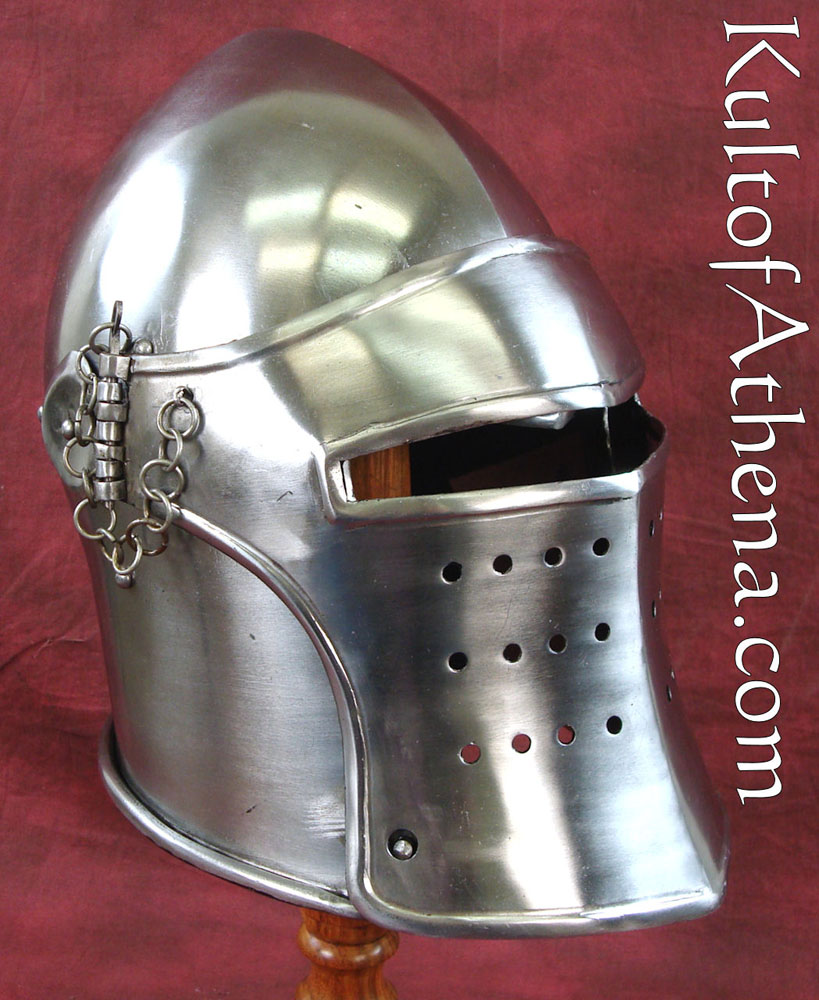
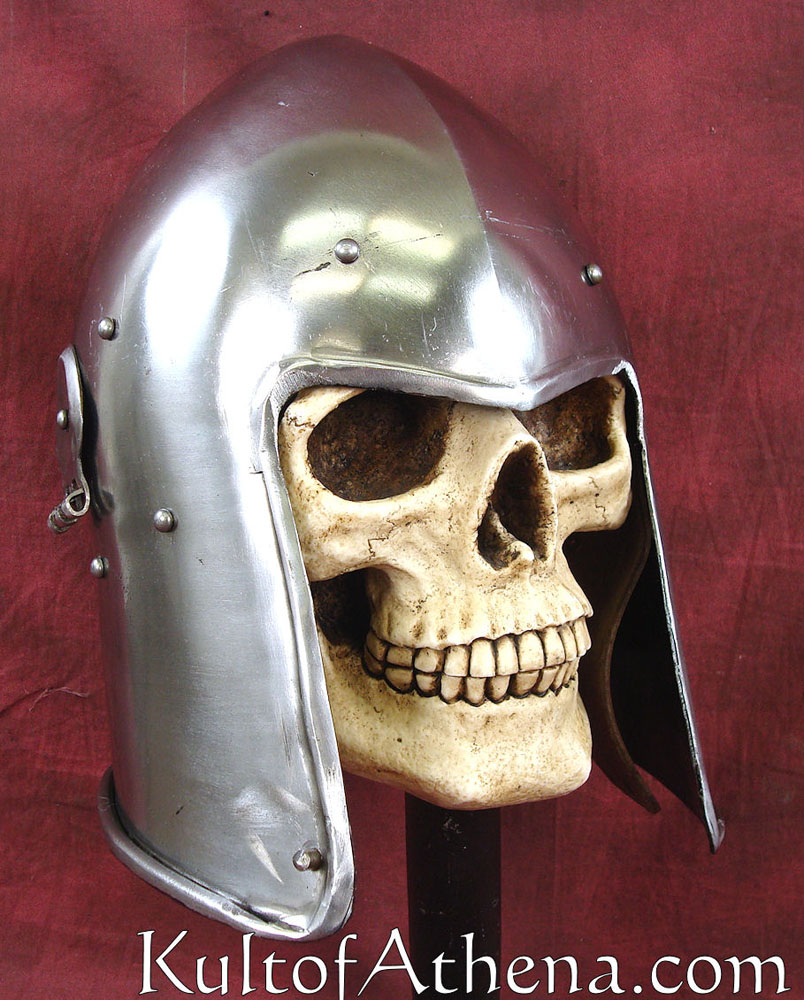
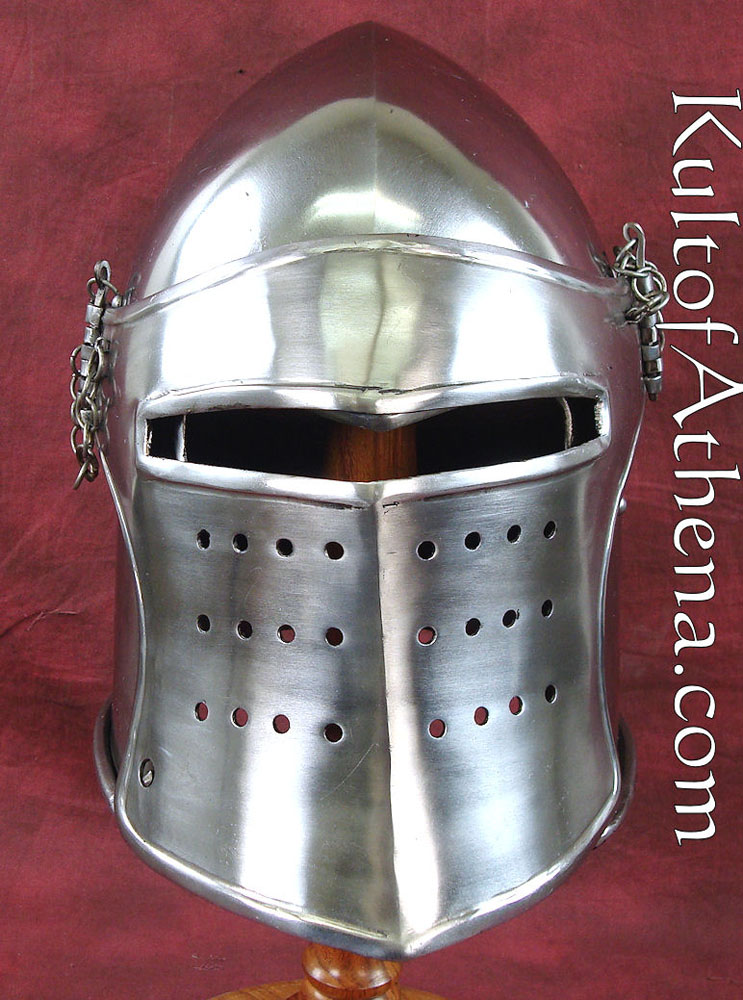
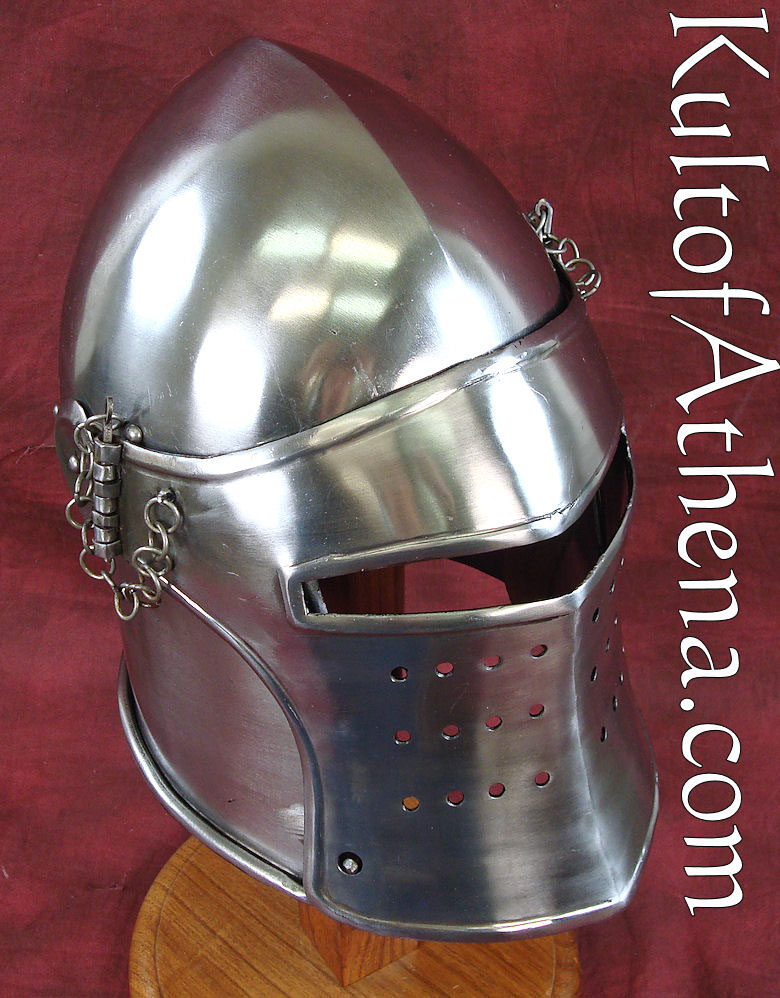
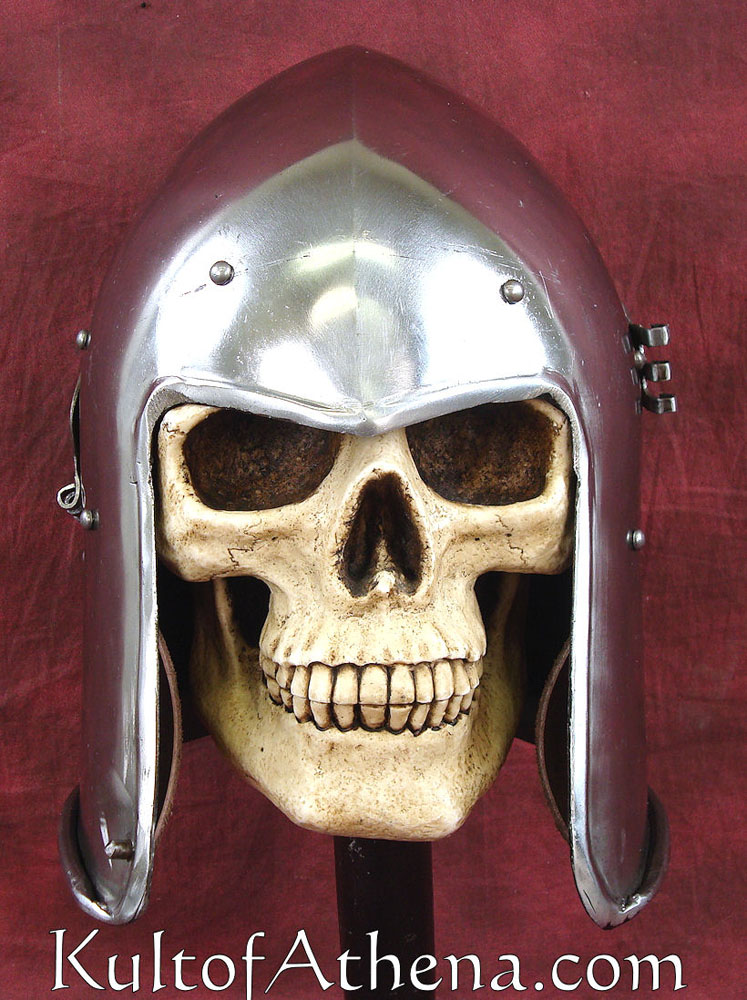
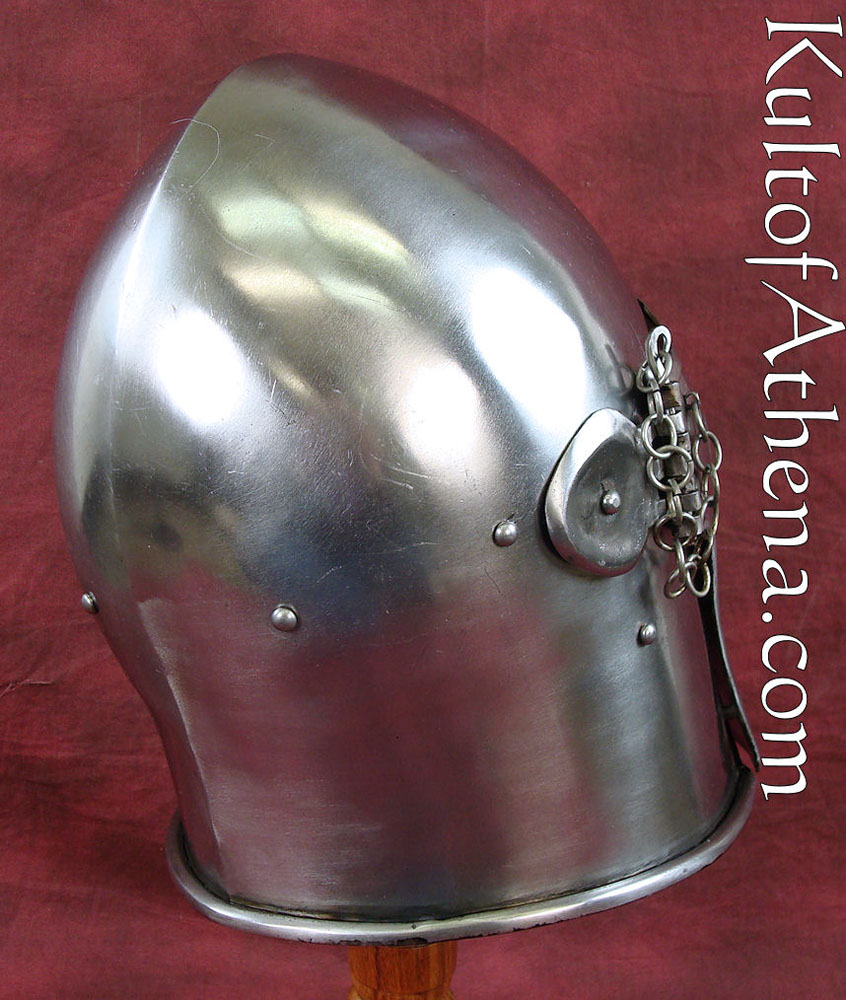
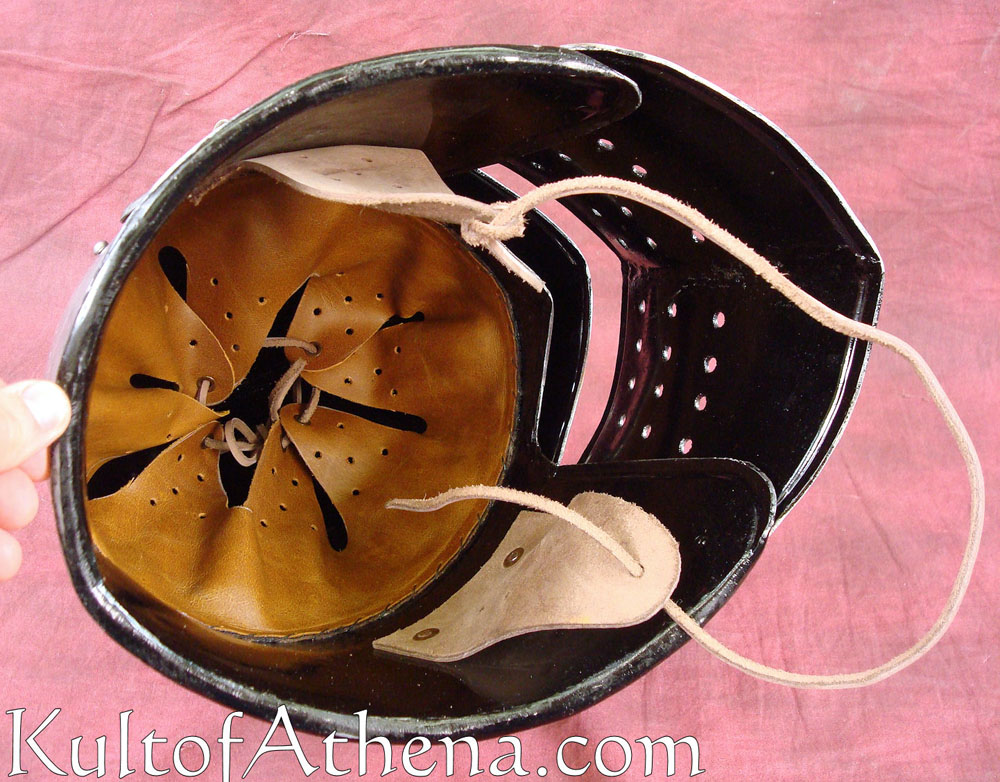
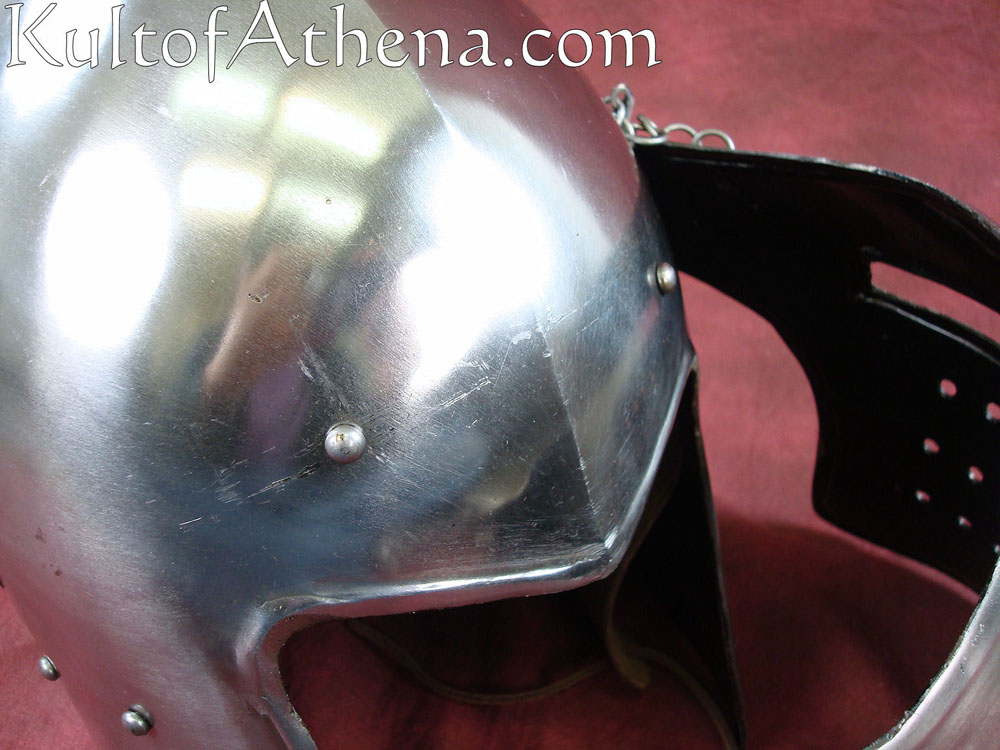


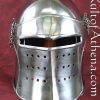
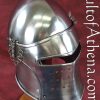


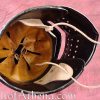
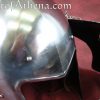

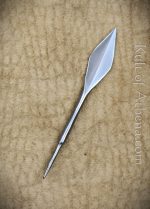
adrian g. –
excelent helm but even the large it a little tight due to shape very durable the visor at least on mine can only come off buy pulling the pins and can’t be pulled off without modification the fit is great and the strapes are for the most part useless love it :)
Chris Hick –
Great buy I have used this helm for about 8 months now. It is very durable I use this as well as 16 gauge chain underneath it. I have yet to really feel any sort of pain from full contact blows. I may get a second one!
Titus S. –
Awesome, but tight and very heavy I got the factory blemished version. I had to file down the pin that secures the visor in order to get it to the point where i could raise and lower the visor without taking the helm off and using both hands.
The suspension is good, but the helmet is tight. I cannot wear an arming cap underneath it, but a beanie works well.
Visibility through the visor is good, and I found little difficulty in fighting with the visor down.
This helmet is very heavy. Not too heavy to fight in, but heavy enough that it is very noticeable. As a perk, i have taken a face shot during foam fighting and barely noticed due to the helmet’s weight.
I highly recommend this helmet.